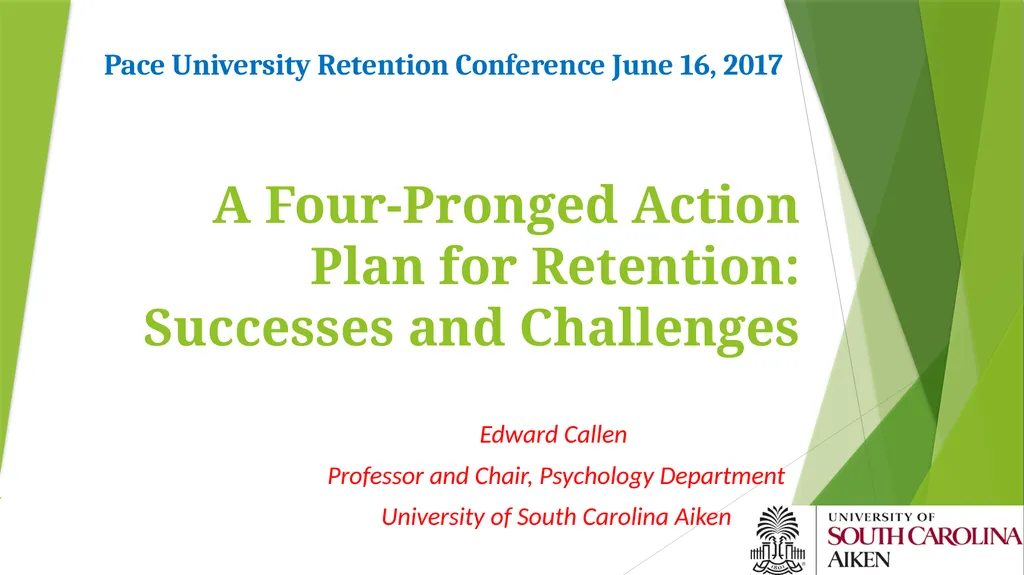A Four-Pronged Action Plan for Retention:
Author : celsa-spraggs | Published Date : 2025-05-19
Description: A FourPronged Action Plan for Retention Successes and Challenges Edward Callen Professor and Chair Psychology Department University of South Carolina Aiken Pace University Retention Conference June 16 2017 University of South Carolina
Presentation Embed Code
Download Presentation
Download
Presentation The PPT/PDF document
"A Four-Pronged Action Plan for Retention:" is the property of its rightful owner.
Permission is granted to download and print the materials on this website for personal, non-commercial use only,
and to display it on your personal computer provided you do not modify the materials and that you retain all
copyright notices contained in the materials. By downloading content from our website, you accept the terms of
this agreement.
Transcript:A Four-Pronged Action Plan for Retention::
A Four-Pronged Action Plan for Retention: Successes and Challenges Edward Callen Professor and Chair, Psychology Department University of South Carolina Aiken Pace University Retention Conference June 16, 2017 University of South Carolina Aiken Senior comprehensive university in South Carolina system COPLAC Member Institution #1 for Public Regional Comprehensive Universities in the South by U.S. News and World Report. Undergraduate degrees and few graduate degrees Fall 2016 Enrollment: 3548 40% first-generation 2013 Campus Strategic Planning Process Action Item: Retain, progress and graduate a greater percentage of students Retention, Progression, and Graduation Committee: Addressing high DFW rates (particularly those that impact large numbers of students). Evaluating the purpose and educational goals of placement testing and its effectiveness in identifying academic readiness for various courses. Ensuring that early intervention initiatives are having a positive impact in a way that is cost and work load effective (e.g., academic services for students, diagnostics, reporting processes). Improving academic advising processes and approaches. DFW rates Potential Factors Impacting High DFW Rates Course structure/design/instructor Is the method of instruction appropriate and the most effective one for the course? Is the length of class periods appropriate for the subject matter? Should the course meeting times be shortened or lengthened for better success? Are there additional course delivery methods that can assist certain low-performing or at-risk students in the course, such as supplemental lab course requirements, online web assistance/training, supplemental course materials? Does the structure of the course provide adequate feedback and assessment to the student (i.e., frequency of grades/written assignments) regarding his or her performance prior to midterm grade reporting and/or the withdrawal date? Are there mechanisms and/or strategies in place in the course for intervention with students that are performing at the “DF” level? Potential Factors Impacting High DFW Rates Inadequate preparation in subject matter If there is a placement test, is it accurately assessing knowledge necessary for that particular course? Are there courses that do not have a placement test or diagnostic tool that would benefit from one? Are prerequisite courses adequately preparing students for that particular course? Should new/additional prerequisites be required? Is the course listed at the correct level (i.e., is it a 100-level course that should not be taken by freshmen)? Independent of the course number, is the course one that certain students or majors would be more successful in it if not taken until the second semester or second year? Other factors Does














